#The Franklin Electric
Text
Montreal’s “underground” music scene is si slept on, however the urge to gate-keep looms large with the ‘musical tiktok-chairs’-like market, as i like to think of it.
commodity of enjoyment is a real fear! never one to suppress it, however, especially when it comes to MUSICA
#godspeed you! black emperor#bran van 3000#men i trust#patrick watson#les louanges#klô pelgag#half moon run#fleece#the franklin electric#milk & bone#desire#AND MORE
4 notes
·
View notes
Text

Festival Cigale, Beauport, Québec 🇨🇦
August 2022
0 notes
Text
The most famous early experiment with electricity was Ben Franklin’s kite. In 1752, he flew a kite with a metal key attached to his kite string in a thunderstorm. The key collected static electricity from the storm (it was not hit by lightning, as is commonly believed; that would have killed Franklin).
Sixty years later, Benjamin West depicted the moment as a moment of almost divine inspiration:

Though Franklin gets all the credit for this idea, a number of intrepid scientists were doing similar things around the same time — including Georg Wilhelm Richmann, who, the following year, was killed when lightning struck an apparatus he had set up.
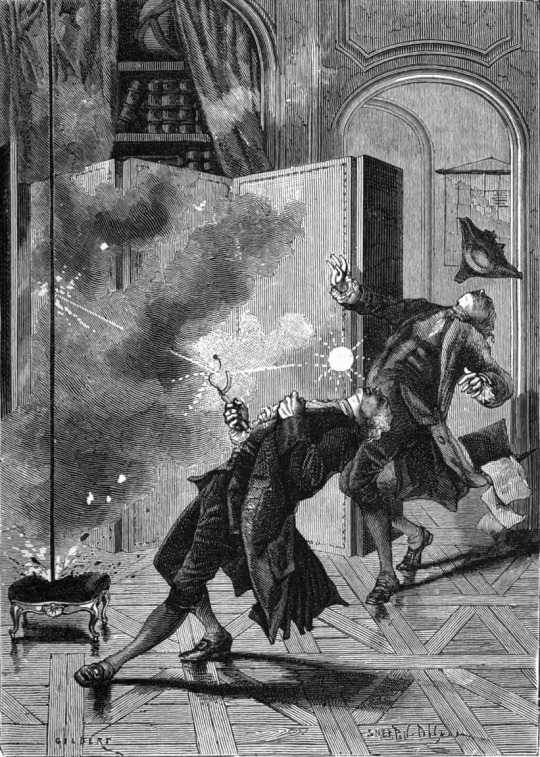
{Buy me a coffee} {WHF} {Medium} {Looking Through the Past}
Many more experiments with electricity, from the silly to the sublime:
133 notes
·
View notes
Text

choosing to believe this means all Spidey Super Stories / Electric Company shows are canonical to 616
#not taking any corrections at this time#spidey super stories#franklin richards#fantastic four#smcomics#spider-man comics#spider-man#spidey#spider-man electric company#electric company
41 notes
·
View notes
Text
#bridge over troubled water#simon and garfunkel#aretha franklin#dr. teeth and the electric mayhem#elvis presley#spotify#tumblr polls#polls
21 notes
·
View notes
Note
I also have some other headcanons for the newport heroes
Rose Franklin fills in Becky on what she knows about the heroes. She tried to find out their identities in the past before she moved to Fair City. She doesn't do it when they come to Fair City after her experience with Becky.
The heroes sort of adopt Becky and Rex as young hero siblings. Rex hangs out with the four more so than Becky.
Dr. Two Brains doesn't like it when Becky actively hangs out with the four. He doesn't forbid her but he tries to discourage her from hanging out with them.
Becky is a little wary around Atomic Steel in the beginning because he reminded her of Miss Power a bit.
She felt sympathy for him when he finally told her about his dad and how he died.
Becky is secretly worried and frightened a bit over Professor Terror and Maddrix the Malicious even though she hasn't met them before. (as far as she knows😈)
Two Brains tells her that they are long gone and he won't let them hurt her if they do return. Becky gets confused why her dad always looks sad when she tells him about her worries over the two villains.
The reason Dr. Two Brains doesn't want Becky hanging out with the four newport heroes is because he doesn't want them to mention Professor Terror or Maddrix around her. She is better off not knowing about either of them.
@dualnaturedscientist
Oddly enough I can see atomic trying to mentor her. Perhaps all four of them fight over mentorship (But everyone knows it's her u-u)
E.b.: thanks to this book written by professor Steven boxleitner I was able to start my path as a hero
wordgirl: same! My dad's book helped me a lot.
E.b.: no way! He's your dad!? 👀 ✨
Fern: oh boy she's excited now-
Anddd then that's when they realize Steven was two brains
#ninjastormhawkkat#the newport heroes#rose franklin#Kid math#Rex#becky boxleitner au#electric blur#wordgirl au#wordgirl oc#wordgirl#steven boxleitner#dr. two brains#atomic steel#hydro#fern trap
9 notes
·
View notes
Text
'Organisers of a legendary fundraiser for striking miners are returning to the same venue in Camden Town for a “good old bop” 40th anniversary event.
Tickets for the London Lesbian and Gays Support the Miners’ return to the Electric Ballroom, on May 16, are already selling out.
The Pits and Perverts line-up is yet to be finalised but it promises a night of music, dance, drag, political speakers and compered by cabaret and performance artist David Hoyle.
Synth-pop political agitators Bronski Beat headlined the original gig, in December 1984, which drew more than 1,500 fans, gay activists and striking coal miners from across the country to Camden Town.
The story of the LGSM and the night at the Ballroom has become iconic after it was retold in the 2014 film Pride and its glittering cast including George MacKay, Dominic West, Andrew Scott, Imelda Staunton and Bill Nighy among others.
One of the original LGSM organisers, Mike Jackson, told me this week how proud he was about the group’s role in not only supporting the miners – but also changing attitudes towards lesbian and gay people.
Mr Jackson, who lives in King’s Cross, said: “This is the only Pits and Perverts event we’ve had since the original. And it’s really pleasing to be back at the Electric Ballroom. It’s going to be a very diverse night and a good old bop.
“I hadn’t been back there since that day so it was a strange feeling to go in there when we were organising.
“There are lot of ghosts in the Electric Ballroom. So many famous acts have passed through.”
I last spoke to Mike when a signed original Pits and Perverts poster – designed by Kevin Franklin – was put up at the King Charles I pub in King’s Cross in 2022.
On Sunday he was up in Rotherham, Yorkshire, speaking to the miners at a 40th anniversary event.
He said: “I harked back to what it was like as a young gay man in the 60s and 70s. Nobody liked us: politicians, courts, police.
“We had no rights to fight back with. It’s great that things have changed so much with that – and to think how we played a role in it all.
“The unions played a role too.
“Because long before we got those rights enshrined in law, the trade union movement had been helping by starting to look at employment rights, and all the other things that trade unions do.
“When the equalities legislation came in with Tony Blair, there was already a worked-out template for employment rules thanks to the unions.”
Mr Jackson said the LGSM had been “reconstituted” following the Pride movie and that he was part of a group of four remaining working on the legacy.
“We’ve all this merchandise that is still incredibly popular.
“People love our T-shirts. We give the profits away to good causes. We don’t want to be a charity.
“We want to be political. It’s been great to work with the Lesbian and Gays Support the Migrants.
“They are like our next generation really.”
Mr Jackson, a horticulturist who worked at Camden Garden Centre for 16 years, said he was tiring a little physically in old age but still remained as angry as ever.
“The fire is still there. The anger is still there.
“What is this nonsense about people becoming more right wing as they get older? The older I get the more angry I get.
“Because in so much, f*** all has changed.
“I am 72 days before the gig. I can tell you what the news will be: housing, education, war, benefits, the welfare state, greedy capitalism.
“At the same time my best friend is my bed. Sometimes I scream at my bed: ‘I love you, bed.’
“So with all this I am a bit surviving on adrenalin. It’s a bit scary. We are a bunch of amateurs really and it’s a big venue to sell tickets for.
“With the original, we felt the same but once we secured Bronski Beat – I think their Smalltown Boy was No 1 – we knew it would be a success.”
And he revealed his latest theory on where the night got its very excellent name from.
Mr Jackson said: “There’s a great little video you can find called Framed Youth – The Revenge of the Teenage Perverts.
“It was a video project created by the Lesbian and Youth Project, as they were called then, where youngsters had been given training and access to making a video – it was a Ken Livingstone thing, I think.
“This was 42 years ago – two years before the miners strike.
“They go into Ridley Road market in Dalston and simply ask the question: Can you tell me what a lesbian is? It’s like ‘a murderer’, ‘a sex maniac’.
“It’s so comical, but also quite dark. The lesbians were p***ing themselves laughing.
“But that’s what we wanted to do – take the insult, neutralise it and throw it back at people.”
The film, which won an award, is available on YouTube.
The original concert raised more £5,500, which was distributed to families in need.
Tickets for the 7pm event cost £20 and are available on the Electric Ballroom website.'
#Lesbians and Gays Support the Miners#Pride#Pits and Perverts#Electric Ballroom#Bronski Beat#George MacKay#Dominic West#Andrew Scott#Imelda Staunton#Bill Nighy#Camden Town#David Hoyle#Mike Jackson#Kevin Franklin
2 notes
·
View notes
Text

131:12:00 - Reverse Engineering a Kite to Steal the Idea of Electricity From Benjamin Franklin
#unus annus#memento mori#memento mori memories#day 234#reverse engineering a kite to steal the idea of electricity from benjamin franklin
56 notes
·
View notes
Text
Benjamin Franklin looked absolutely crazy to any onlookers
“what’s Ben doing during the storm”
“Oh flying his kite”
4 notes
·
View notes
Text
the best part of the death grips show was this picture i took outside the venue mere minutes before i would be stomped into smithereens in the pit

#FUCK the electric factory#or franklin music hall whatever they call it now#1 security guard who is both blind and deaf#*
2 notes
·
View notes
Text
Things students have genuinely asked me this year:
Whether any of the soldiers from the Boston Massacre are still alive today
If Benjamin Franklin invented the electric guitar
#teacher life#I understand the logic of the second question#I had just told them that Franklin studied electricity and played the guitar and invented the glass armonica
15 notes
·
View notes
Text
Tennu Le || Muskurane - Tera Mera Rishta | | Bollywood Lofi || ( ACOUSTIC MASHUP BY SHAURYA KAPOOR )
https://www.youtube.com/watch?v=RtD4ZCF343A
youtube
#muskurane ki wajah tum#muskurane ki wajah tum ho#muskurane ki wajah tum ho song#bollywood songs#bollywood latest songs#tulsi kumar and darshan raval new song#benjamin franklin electricity discovery#numan shoping center#tenu le ke jana singe#Youtube
0 notes
Photo

Did you know? On May 10, 1752, Thomas-Francois Dalibard of France conducted Benjamin Franklin's "kite" experiment using a 40-foot-tall (12 m) iron rod. He extracted electrical sparks from a cloud.
#thomas-francois dalibard#benjamin franklin#lightning rod#electricity#kite experiment#science#science history#on this day#on this day in science history
1 note
·
View note
Text
Top 5 Inventions Related to Electricity
1. Electric Motor
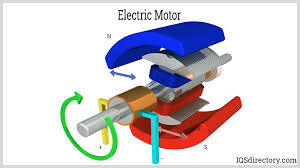
Electric motors are an integral part of modern society, powering everything from household appliances to automobiles. These devices convert electrical energy into mechanical energy, allowing for the efficient operation of a wide range of machinery. But how were electric motors created, and what were the key developments that led to their widespread use today?
Creation
The first electric motors were simple electrostatic devices described in experiments by Scottish monk Andrew Gordon and American experimenter Benjamin Franklin in the 1740s. The theoretical principle behind them, Coulomb's law, was discovered but not published, by Henry Cavendish in 1771. This law was discovered independently by Charles-Augustin de Coulomb in 1785, who published it so that it is now known with his name. Due to the difficulty of generating the high voltages they required, electrostatic motors were never used for practical purposes. But the invention of the electrochemical battery by Alessandro Volta in 1799 made possible the production of persistent electric currents.
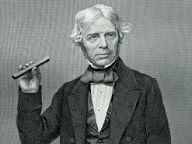
Michael Faraday

Michael Faraday dynamo
The first steps towards the creation of practical electric motors were taken in the early 19th century. In 1821, Michael Faraday discovered that an electric current could be used to produce a magnetic field. This discovery paved the way for the development of the first electric motors, which used electromagnetic principles to produce motion. Faraday demonstrated the principle of electromagnetic induction, showing that a moving magnetic field could produce an electric current in a wire. This discovery led to the development of the first practical electric generators, which could convert mechanical energy into electrical energy.

Faraday's electromagnetic experiment, 1821, the first demonstration of the conversion of electrical energy into motion

Ányos Jedlik
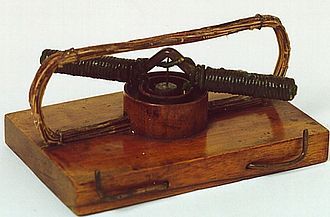
Jedlik's "electromagnetic self-rotor", 1827 (Museum of Applied Arts, Budapest). The historic motor still works perfectly today.
In 1828 Jedlik demonstrated the first device to contain the three main components of practical DC motors: the stator, rotor and commutator. The device employed no permanent magnets, as the magnetic fields of both the stationary and revolving components were produced solely by the currents flowing through their windings.
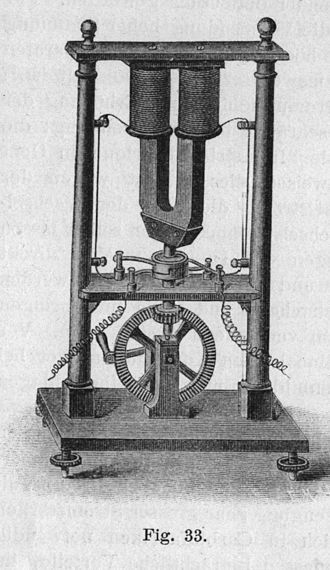
An early form of an alternating current electrical generator built by Pixii
The next major breakthrough in the creation of electric motors came in 1832, when French physicist Hippolyte Pixii developed the first electromagnetic device capable of continuous rotation. This device, known as the Pixii machine, used a rotating magnet to induce an electric current in a stationary coil, producing continuous motion. The first commutator DC electric motor capable of turning machinery was also invented in 1832 by British scientist William Sturgeon.
Other Important Events In Electric Motor
Moritz von Jacobi created the first real rotating electric motor in May 1834.
In 1855, Jedlik built a device using similar principles to those used in his electromagnetic self-rotors that was capable of useful work.
The drum rotor was introduced by Friedrich von Hefner-Alteneck of Siemens & Halske to replace Pacinotti's ring armature in 1872, thus improving the machine efficiency.
The laminated rotor was introduced by Siemens & Halske the following year, achieving reduced iron losses and increased induced voltages.
In 1880, Jonas Wenström provided the rotor with slots for housing the winding, further increasing the efficiency.
In 1873, American inventor Zenobe Gramme developed the first practical DC motor, which used a commutator to produce continuous rotation. This design was highly efficient and quickly became the standard for electric motors in a wide range of applications.
Growth
In 2022, electric motor sales were estimated to be 800 million units, increasing by 10% annually. Electric motors consume ~50% of the world's electricity.
Components
Stator
The stator is the stationary part of the electric motor. It consists of a steel frame, which houses a series of electromagnets. These electromagnets are called stator windings and are made of copper wire. When an electric current flows through the stator windings, they produce a magnetic field.
Rotor
The rotor is the rotating part of the electric motor. It is located inside the stator and is mounted on a shaft. The rotor is made of a series of electromagnets that are arranged in a specific pattern. When the electric current flows through the stator windings, it produces a magnetic field, which interacts with the magnetic field of the rotor, causing it to rotate.
Commutator
The commutator is a component that is located on the rotor shaft. It consists of a series of copper segments that are separated by insulating material. The commutator is responsible for changing the direction of the electric current as the rotor rotates. This is necessary to ensure that the rotor continues to rotate in the same direction.
Brushes
The brushes are components that are located on the stator. They are made of carbon and are in contact with the commutator. The brushes transfer the electric current from the power source to the commutator, which then transfers it to the rotor.
Bearings
The bearings are components that support the rotor shaft and allow it to rotate smoothly. They are usually made of metal and are located at both ends of the motor.
Enclosure
The enclosure is a component that covers the motor and protects it from the environment. It is usually made of metal or plastic and is designed to prevent dust, moisture, and other contaminants from entering the motor.
Advantages
Firstly, electric motors are incredibly efficient. Unlike internal combustion engines, which convert only around 20% of the energy stored in fuel into motion, electric motors are much more efficient. In fact, they can convert up to 90% of the electrical energy they receive into mechanical energy. This means that they are much more energy-efficient, resulting in lower energy costs and reduced carbon emissions.
Secondly, electric motors are extremely reliable. They have fewer moving parts than internal combustion engines, which means that there are fewer parts that can wear out or break down. This translates to lower maintenance costs and fewer breakdowns, making electric motors a more cost-effective option in the long run.
Thirdly, electric motors are much quieter than internal combustion engines. This is because they produce less noise and vibration during operation. This makes them ideal for use in a wide range of applications, from electric cars to household appliances, where noise pollution is a concern.
Fourthly, electric motors are much more environmentally friendly than internal combustion engines. As they produce no emissions during operation, they have no negative impact on the environment. This makes them ideal for use in a range of industries, from transport to manufacturing, where environmental concerns are a key consideration.
Finally, electric motors are versatile and can be used in a wide range of applications. They are used in everything from electric cars to industrial machinery and household appliances, and their adaptability means that they are likely to be used in many more applications in the future.
2. Electric Light Bulb

The invention of the electric light bulb is one of the most important developments in modern history. The ability to produce light without relying on flames or other hazardous materials revolutionized the way we live and work. The creation of the electric light bulb was a long and arduous process, with many scientists and inventors contributing to its development over the years.
Creation

Alessandro Volta
The story of the electric light bulb begins in the early 1800s, with the invention of the electric battery by Alessandro Volta. This invention made it possible to store and use electricity in new and innovative ways, and many scientists and inventors began to experiment with its applications.

Sir Humphry Davy
One of the early pioneers of electric light was Sir Humphry Davy, who in the early 1800s demonstrated the incandescent light, where a wire heated by an electric current produced light. However, this design was not practical for everyday use as the wire would quickly burn out.

It wasn't until the late 1800s that Thomas Edison was able to develop a commercially viable electric light bulb. Edison began experimenting with electric lighting in the 1870s, and by 1879 he had developed a carbon filament that was capable of withstanding the heat and producing light for an extended period of time. Edison's breakthrough came through his development of a vacuum pump that could remove air from the bulb, which greatly reduced the amount of heat and prevented the filament from burning out. He also experimented with different materials for the filament, finally settling on carbonized bamboo.
Edison's first public demonstration of his electric light bulb took place in December of 1879, and it quickly became clear that this invention was going to change the world. Edison founded the Edison Electric Light Company and began installing electric lighting systems in homes, businesses, and public spaces around the country.
Growth
The electric light bulb was a major breakthrough in human history, paving the way for many other technological developments. With the ability to produce light on demand, people could work and play long into the night, and entire industries were created around the production and distribution of electricity. Today, the electric light bulb is still an essential part of modern life, although it has evolved significantly since its early days. Modern LED bulbs are much more efficient and long-lasting than Edison's original design, and they are used in everything from streetlights to smartphones.
3. Electric Battery

The electric battery is a device that converts chemical energy into electrical energy, and it has become an essential component of modern life. From powering our smartphones and laptops to enabling electric cars to run, the electric battery has revolutionized the way we use and consume energy.
Creation

Benjamin Franklin
Benjamin Franklin first used the term "battery" in 1749 when he was doing experiments with electricity using a set of linked Leyden jar capacitors. Franklin grouped a number of the jars into what he described as a "battery", using the military term for weapons functioning together. By multiplying the number of holding vessels, a stronger charge could be stored, and more power would be available on discharge.

Alessandro Volta

Italian physicist Alessandro Volta demonstrating his pile to French emperor Napoleon Bonaparte

A voltaic pile, the first battery
The history of the electric battery dates back to the late 1700s, when Italian physicist Alessandro Volta discovered the principle of the electric cell. Volta's invention consisted of two different metals, typically copper and zinc, which were separated by a moistened piece of cardboard or paper. This simple device, known as the "Voltaic pile," generated a steady stream of electricity.
Volta's invention was soon improved upon by other inventors, including William Cruickshank and John Daniell, who developed more practical batteries. In 1836, John F. Daniell invented the Daniell cell, which used a copper sulfate solution and a zinc electrode to produce electricity. This battery was used extensively in telegraphy, which was the first major application of electricity in communication.

Georges Leclanché
In the late 1800s, another important development in the field of batteries occurred. French engineer Georges Leclanché developed the Leclanché cell, which used a zinc electrode and a manganese dioxide electrode in a solution of ammonium chloride. The Leclanché cell was smaller, more reliable, and less expensive than previous batteries, and it became the standard battery for telegraphy and early electric lighting. In the early 1900s, American inventor Thomas Edison developed the nickel-iron battery, which was used in electric cars and trucks. Edison's battery was durable, rechargeable, and long-lasting, but it was also heavy and expensive, and it ultimately lost out to the lead-acid battery, which was cheaper and easier to manufacture.
Modern Battery
The modern electric battery, which is used in everything from cell phones to electric cars, is a much more sophisticated device than its early predecessors. Modern batteries are made up of many individual cells, each of which contains an anode, a cathode, and an electrolyte. The anode is typically made of lithium or another metal, while the cathode is made of a metal oxide. The electrolyte is a liquid or gel that allows ions to flow between the anode and the cathode.
Growth
Between 2010 and 2018, annual battery demand grew by 30%, reaching a total of 180 GWh in 2018. Conservatively, the growth rate is expected to be maintained at an estimated 25%, culminating in demand reaching 2600 GWh in 2030. In addition, cost reductions are expected to further increase the demand to as much as 3562 GWh.
The development of modern batteries has been driven by a combination of research and development, technological advancements, and market demand. In recent years, there has been a surge of interest in developing new types of batteries that are more efficient, more powerful, and more environmentally friendly.
Chemistry
Electric batteries convert chemical energy into electrical energy by means of a redox reaction. In a redox reaction, one substance is oxidized, losing electrons, while another substance is reduced, gaining electrons. This transfer of electrons creates an electric current, which can be used to power electronic devices. The basic components of an electric battery are an anode, a cathode, and an electrolyte. The anode is the negative electrode, while the cathode is the positive electrode. The electrolyte is a solution or a solid material that allows ions to move between the anode and cathode. When a battery is charged, electrons are removed from the anode and transferred to the cathode through the external circuit. This creates a buildup of positively charged ions at the cathode and negatively charged ions at the anode. When the battery is discharged, the opposite happens, and the ions flow from the cathode to the anode, creating an electric current.
There are many different types of electric batteries, each with its own unique chemistry. The most common type of battery is the lead-acid battery, which is used in cars and other applications. Lead-acid batteries consist of lead dioxide as the positive electrode, lead as the negative electrode, and a sulfuric acid electrolyte. When the battery is charged, lead dioxide is reduced to lead, and lead is oxidized to lead dioxide when the battery is discharged.
Another common type of battery is the lithium-ion battery, which is used in smartphones, laptops, and electric cars. Lithium-ion batteries use lithium cobalt oxide as the positive electrode, graphite as the negative electrode, and a lithium salt electrolyte. When the battery is charged, lithium ions move from the positive electrode to the negative electrode, where they are stored in the graphite. When the battery is discharged, the lithium ions move back to the positive electrode, creating an electric current. Other types of batteries include nickel-cadmium batteries, nickel-metal hydride batteries, and sodium-ion batteries. Each of these batteries has its own unique chemistry, which determines its performance, cost, and environmental impact.
4. Electric Trolley

The electric trolley is a revolutionary invention that changed the way people travel in cities. It is a form of public transportation that operates on rails and is powered by electricity. The invention of the electric trolley can be attributed to the efforts of one man, Frank J. Sprague.
Creation
The first working trolley pole was developed and demonstrated by Charles Van Depoele, in autumn 1885 but the use of overhead wire in a system of current collection is reputed to be the 1880 invention of Frank J. Sprague.
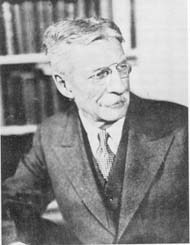
Frank J. Sprague
Frank J. Sprague was born in 1857 in Milford, Connecticut. He was a brilliant inventor and electrical engineer, who made many contributions to the field of electricity. In the late 19th century, he began working on the development of an electric streetcar system, which would be powered by an overhead wire.
Sprague's first electric streetcar system was installed in Richmond, Virginia, in 1888. The system consisted of a single trolley car that was powered by a generator located at the end of the line. The car was equipped with an electric motor, which was connected to the overhead wire by a trolley pole. The trolley pole was a long pole that extended from the roof of the car and made contact with the overhead wire.
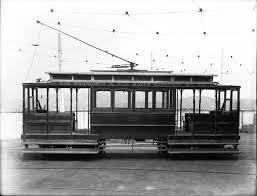
Sprague's system was a great success, and it soon caught the attention of other cities. Over the next few years, Sprague installed electric streetcar systems in several other cities, including Brooklyn, New York; Chicago, Illinois; and Boston, Massachusetts. By 1890, there were over 100 electric streetcar systems operating in the United States.
Advantages
The electric trolley had several advantages over the horse-drawn streetcars that were in use at the time. The electric trolley was faster and more reliable than the horse-drawn streetcar. It was also cleaner, as it did not produce the waste and odor associated with horse-drawn transportation. In addition, the electric trolley was quieter than the horse-drawn streetcar, which made it more pleasant for passengers.
Growth
The electric trolley quickly became a popular form of transportation in many cities. It was used by people from all walks of life, including businessmen, workers, and tourists. The electric trolley helped to make cities more accessible, and it played an important role in the development of urban transportation.
5. Electric Power Grid

The development of the electric power grid was a pivotal moment in the history of electricity. Before the grid was created, electricity was only available to a select few, mainly the wealthy, who could afford their own generators and power plants. However, the power grid changed all that, allowing for electricity to be distributed over long distances and reaching millions of people.
Creation

Nikola Tesla
The idea for the electric power grid was first proposed in the late 19th century by a few pioneering engineers and scientists who saw the potential for electricity to revolutionize society. These early pioneers recognized that if they could develop a system to transmit electricity over long distances, they could bring electricity to homes, businesses, and industries around the world.
One of the key figures in the development of the electric power grid was Nikola Tesla. Tesla was a Serbian-American inventor, electrical engineer, and physicist who is best known for his work on alternating current (AC) electricity. In the late 1880s, Tesla began working on the design of a system to transmit AC electricity over long distances, and in 1891, he patented the design for the first AC power transmission system. Despite the groundbreaking work of Tesla and other pioneers, the development of the electric power grid was slow at first. The early power grids were small and localized, and they were often owned and operated by private companies or municipalities. It wasn't until the early 20th century that the idea of a national power grid began to take shape.
One of the key drivers of the national power grid was the need to bring electricity to rural areas. In the early 20th century, rural areas were still largely without electricity, and many farmers and rural residents were forced to rely on kerosene lamps and other sources of light and heat. The federal government recognized the need to bring electricity to these areas, and in 1935, President Franklin D. Roosevelt signed the Rural Electrification Act, which provided funding for the construction of electric power lines and other infrastructure in rural areas.
Growth
The construction of the national power grid accelerated in the post-World War II era, as the demand for electricity increased dramatically. The power grid grew in size and complexity, and new technologies were developed to improve the efficiency and reliability of the system. Today, the electric power grid is a vast network of power plants, transmission lines, and distribution networks that stretches across the United States and around the world.
Advantages
The electric power grid has had a profound impact on society, enabling countless technological advancements and improving the quality of life for millions of people. From powering our homes and businesses to fueling the growth of new industries, the electric power grid is a critical part of modern life, and its development stands as a testament to the power of human ingenuity and innovation.
#Top#5#Electricity#Electrical#Inventions#Electronic#Light bulb#Battery#Dynamo#Motor#Nikola Tesla#Benjamin Franklin#Thomas Edison#Best#Creations
1 note
·
View note
Text
Discover Out Learning Facts & Functioning Of Franklin Electric Well Pumps
A Franklin Electric well pump is a simple machine that uses a motor to create pressure in the water. This pressure can push the water through pipes and into your house. The pump is connected to a control box, which houses a switch that turns the pump on and off. The box also contains an ammeter that measures the amount of current the motor draws and an overload protector that shuts down the motor if it draws too much power.
There are two types of well pumps:
Centrifugal Pump: A centrifugal pump uses an impeller to move water through the pipe.
Jet Pump: A jet pump moves water through a pipe using pressure created by compressed air.
The water then flows into a storage tank, held until you need it. A pressure switch turns the pump on when the water level in the tank gets below a certain point and turns off again when there is enough water to meet your needs. The pump has several features, including a self-priming suction tube and a large 4” discharge opening.

In some cases, the motor is directly connected to a pump, while in other instances, it is connected to a belt that drives the pump. Rotary pumps spin a disc inside a casing containing water and dirt. The disc centrifugally pushes the water out of the casing at high pressure. The Franklin Electric well pump is a high-efficiency water pump that can be used for residential and commercial purposes.
Dick Howard Pumps has been serving the community since 1980, and we are proud to say that we have never stopped improving. Our team of specialists is highly trained in all aspects of water pumps and well pumps, so you can be sure that when you hire us for your needs, it will be done right.
#franklin electric well pump#bore pumps for sale#domestic pressure pumps brisbane#water bore pumps australia
0 notes
Text
Franklin Electric Co. Inc.
Kompanija Franklin Electric Co., Inc. įkurta 1944 metais. Pavadinime panaudotas JAV elektros inžinerijos pionieriaus Benjamin Franklin garbei
#franklinwlectric #investment #dividends #investavimas #dividendinekompanija #pinigai #money
Kompanija Franklin Electric Co., Inc. įkurta 1944 metais. Pavadinimas sugalvotas JAV elektros inžinerijos pionieriaus Benjamin Franklin garbei. Kompanija žymi tuo, kad pirmoji pagamino panardinamąjį variklį vandens sistemoms ir pirmąjį panardinamąjį siurblį degalų tiekimo sistemai.
(more…) “”

View On WordPress
#Dividendinė kompanija#Dividendinis pajamingumas#Franklin Electric#Investavimas#Investavimo idėjos#Investavimo strategijos#Money#Pinigai
0 notes